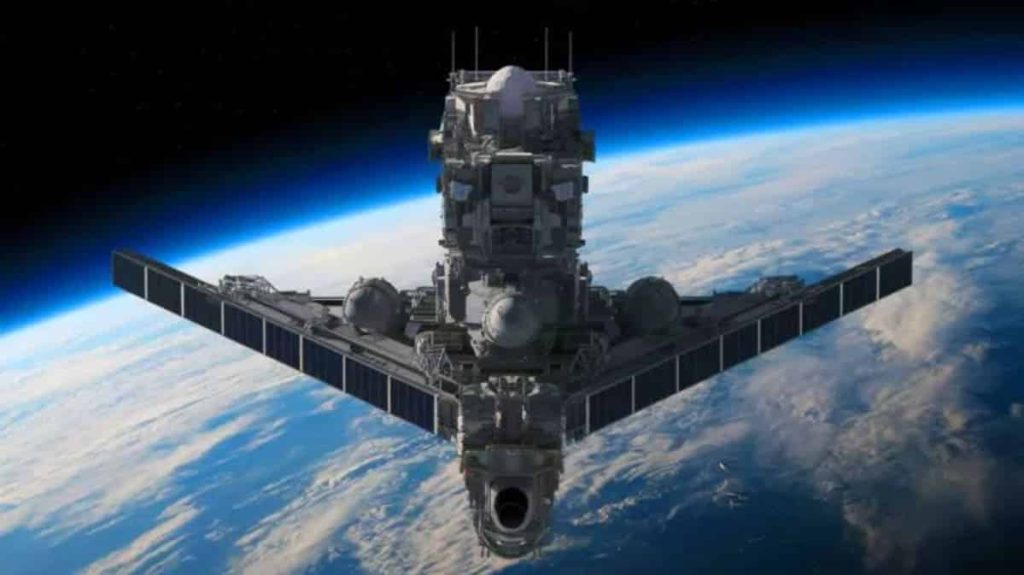The United States has made a significant advancement in the ongoing competition for space supremacy by introducing a revolutionary initiative that could transform how space defense operations are conducted. The U.S. Space Force is heavily investing in an innovative concept known as the orbital carrier. This ambitious project is set to change the deployment and protection of satellites and other space assets, granting the U.S. and its allies an unmatched tactical edge against escalating threats in space.
Transforming Space Deployment with Orbital Carriers
Central to this initiative is the orbital carrier, a versatile space platform functioning like a massive “mothership” in orbit. Created by Gravitics, Inc., the orbital carrier is intended to deploy fleets of spacecraft as needed, providing a strategic advantage that was once confined to the realm of science fiction. By eliminating the limitations of traditional ground-based launches, this system facilitates on-demand deployments, enabling quick responses to emerging threats.
The orbital carrier will be capable of transporting a range of spacecraft that can be deployed instantly. This offers the U.S. Space Force exceptional agility and the capacity for swift action in response to emerging challenges. With significant backing from SpaceWERX, a major contributor to military space advancements, Gravitics is prepared to bring this concept to fruition, with initial demonstrations anticipated within the upcoming year.
On-Demand Launches: A Groundbreaking Shift in Space Strategy
The orbital carrier design aims to enhance the Space Force‘s mission execution efficiency and effectiveness. Historically, space operations have depended on standalone satellite launches, which tend to be slow and inflexible. In contrast, the orbital carrier acts as a mobile launch platform, where spacecraft are kept ready for immediate deployment. This cohesive, on-demand launch mechanism ensures rapid and decisive action against any threats that may materialize in orbit.
Drawing parallels with naval carrier groups that ensure maritime safety, the orbital carrier would serve a similar purpose in space. With advanced space-based armaments developed by rivals like China and Russia, this capability is vital. The ability to initiate multiple missions from a central location provides a new degree of strategic agility, enhancing both defense and deterrence against potential adversaries in space.
Tackling Threats in the Celestial Arena
The current space environment is far from serene—it has become a critical battleground where nations are advancing increasingly sophisticated space weaponry, including radio jammers, kinetic missiles, and even nuclear devices. As threats grow in orbit, the U.S. Space Force must be proactive in defending vital satellite networks and other space assets.
The orbital carrier aims to meet these emerging challenges by providing rapid-response capabilities. It signifies a new era in space warfare, where quick deployment and operational agility are essential for maintaining space superiority. Much like naval carriers extend power across oceans, the orbital carrier is set to project U.S. space power across the heavens.
STRATFI: Facilitating Rapid Innovation and Deployment
The Strategic Funding Increase (STRATFI) program, dedicated to the swift development of crucial military technologies, plays a pivotal role in advancing the orbital carrier project. Gravitics, Inc.’s inclusion in this program marks a significant step towards transitioning this technology from concept to active implementation. STRATFI’s support allows Gravitics to expedite the carrier’s development, ensuring it can be tested and deployed promptly.
A New Phase of Space Defense: Challenges and Inquiries Ahead
As the orbital carrier nears realization, it invites crucial questions regarding the future of space conflict. Will this new technology effectively dissuade adversaries from escalating the arms race in space? Or will it ignite a new wave of competition among nations racing to develop similar technologies? While these questions remain unanswered, one certainty is that the evolution of the orbital carrier signifies an important transition in the conduct of space defense in the forthcoming years.
Amidst the escalating threats posed by space-based weaponry, the U.S. Space Force’s orbital carrier could emerge as a pivotal asset in ensuring American superiority in space for the decades to follow. As space continues to become an increasingly vital domain for security and technological progress, the capability for on-demand asset deployment signals an advance into a new era of military strategy.



